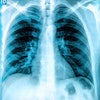
The U.S. Food and Drug Administration (FDA) has published new guidelines for companies submitting 510(k) applications to the agency for solid-state digital detectors to be used in digital radiography (DR) systems.
The 13-page document is the first update to the guidelines since they were last issued in 1999, and it provides guidance on the type of data that the FDA's Center for Devices and Radiological Health (CDRH) will require when reviewing 510(k) submissions for devices.
For example, it describes what types of physical and functional characteristics vendors should provide with submissions, as well as operational functions. Vendors should provide estimates of detective quantum efficiency (DQE) at low spatial and temporal frequency, as well as a plot of the modulation or contrast transfer function of the device.
The document also specifies when clinical information may be necessary to support a submission; it may not be needed for modifications such as changing the dimensions of an image receptor, changing pixel size and resolution with the same x-ray detection material, and changing the receptor's wireless functionality.
If clinical information is required, the document outlines the types of studies that can be performed and how sample images should be formatted. It also defines terms such as what constitutes a qualified expert who might review clinical images in a regulatory submission.
Finally, the document describes what information should be found in a submission regarding device labeling, and how quality assurance programs will be set up and described.
The document does not cover digital detectors used in mammography systems, the agency noted.



















